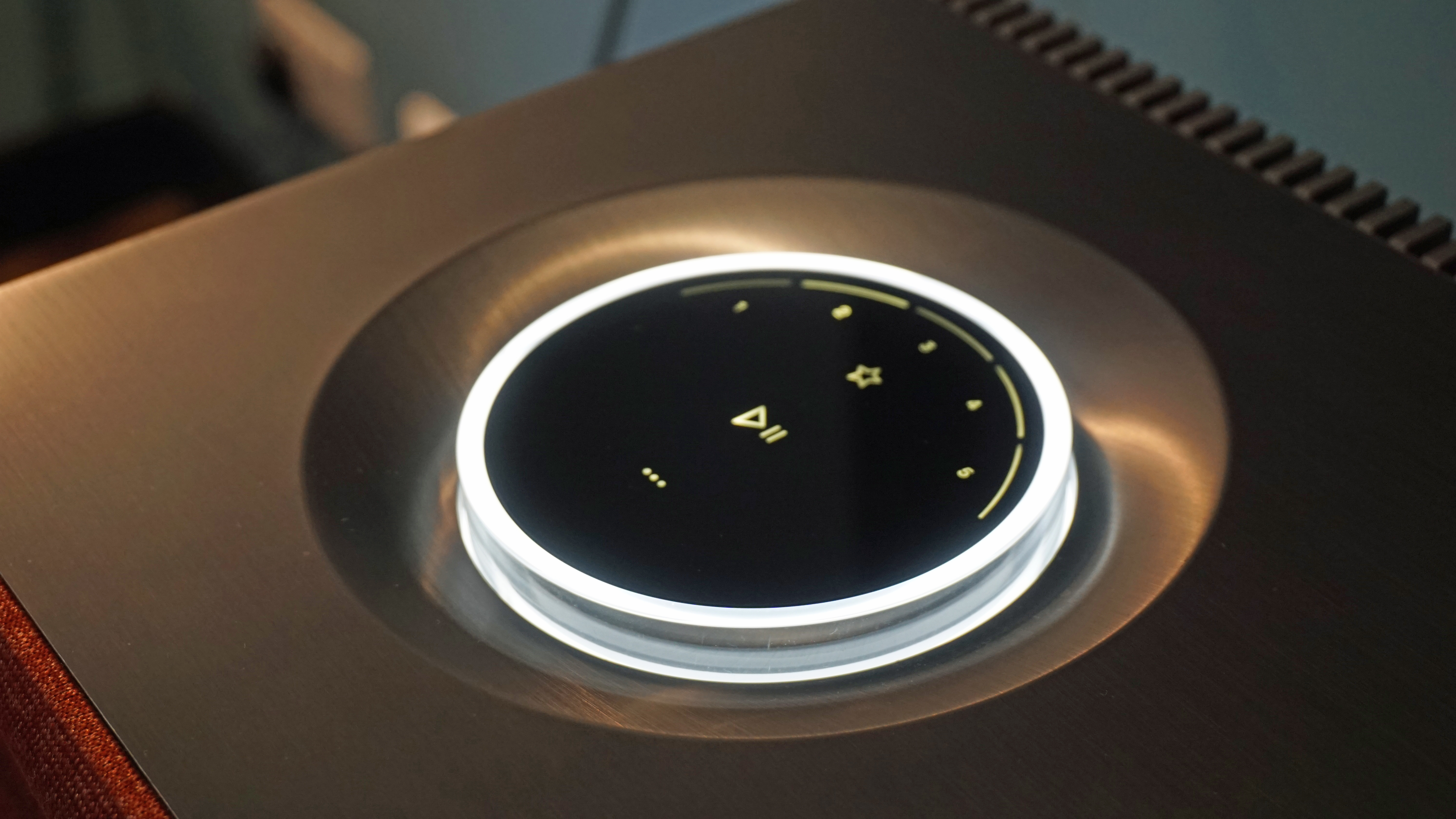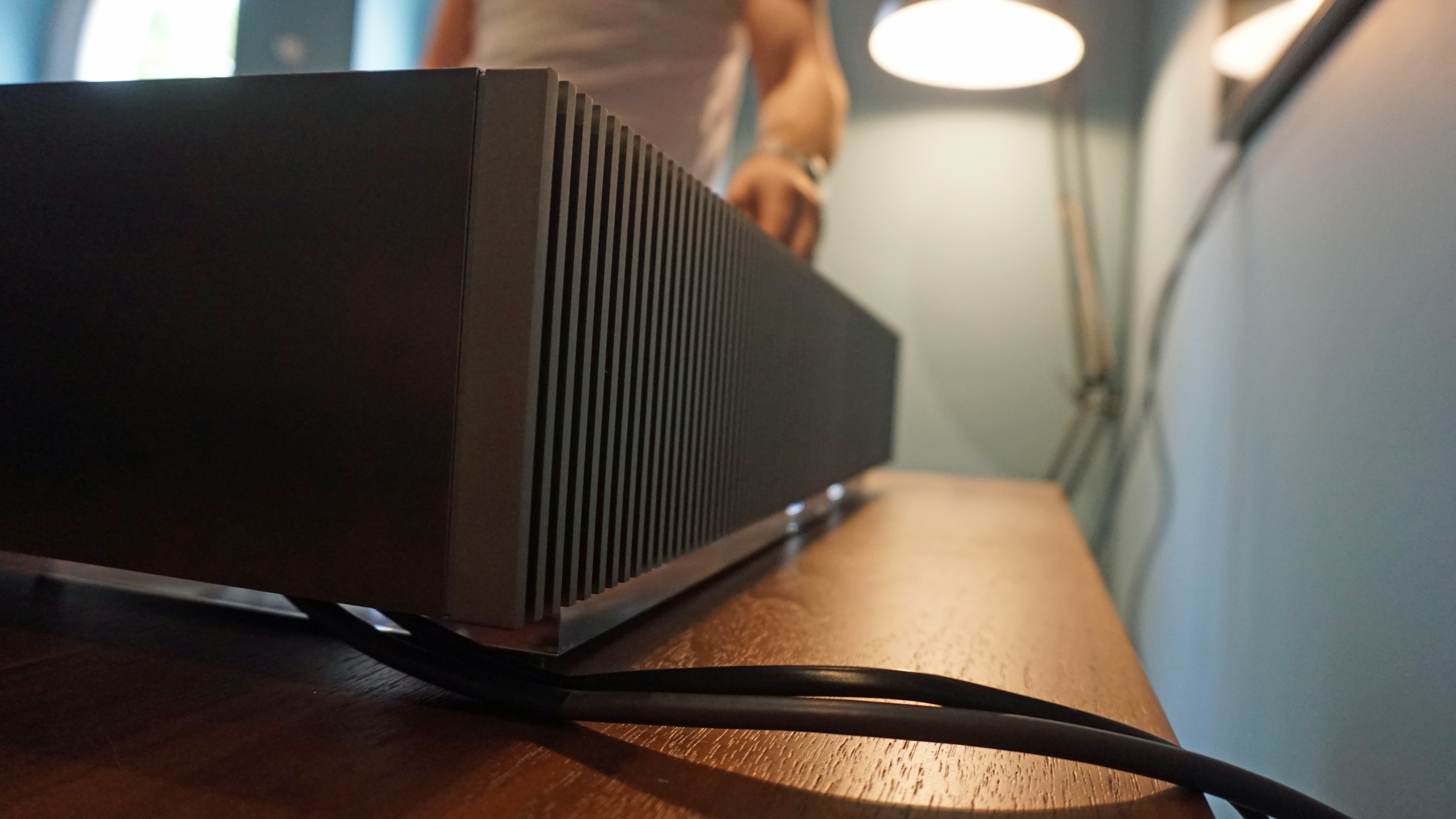TechRadar Verdict
The previous Naim Mu-so was already considered market-leading, but the revamped amplifiers and processors, as well as the HDMI ARC addition, show that this is a company that’s able to stay ahead of the curve.
Pros
- +
Incredible sound quality
- +
Tidal and Spotify built in
- +
HDMI ARC input
Cons
- -
Eye-watering price
- -
Hidden cable ports
- -
No Alexa support (yet)
Why you can trust TechRadar
Naim makes some high-quality speakers, we can tell you that – and the second-generation Naim Mu-so (2019) is no exception to the rule.
The new Mu-so is an all-in-one streaming box and audio system, with integration with the likes of Spotify and Tidal, Bluetooth and Airplay compability, and a host of analogue inputs for connecting to any variety of kitted-out hi-fi systems.
You may be rolling your eyes at the premium pricing: aren’t there plenty of good speakers available for half the cost? Possibly, but you won’t get quite the combination of looks, sound, and functionality that Naim offers here.
The latest Naim Mu-so (2019) model may not look much different from the original, but with a complete overhaul of the internal components, and a steeper price tag to boot, it’s clear that Naim has upped their game for the replacement model, five years after it first launched.
But how good does it really sound? And is the price difference worth it, for those who have the cash to spare? Having thoroughly tested the Naim Mu-so (2019), we don’t think you’ll be disappointed.
[Update: The Naim Mu-So has been given a makeover as part of a collaboration with British car manufacturer Bentley. The special edition model comes with a luxurious wooden finish, a copper-threaded grille, and "the signature Bentley lattice design surrounding the tactile volume dial, which illuminates to your touch". Simply put, it looks gorgeous.]
- Best soundbars for TV, music and films
Price and availability
The second-gen Naim Mu-so retails at $1,599 / £1,299 (around AU$2,400). You can find it at Richer Sounds and John Lewis in the UK, and any number of outlets in the United States.
Sign up for breaking news, reviews, opinion, top tech deals, and more.
The previous model can only be found in a few retailers now, and is quickly selling out of stock, having fallen to around half the price of what the new Mu-so is now. (If you really need something below four figures, you might want to check out the Mu-so Qb, a cube-shaped sibling to the Mu-so and about the closest the brand gets to budget.)

Design
The Naim Mu-so (2019), Naim Mu-so 2, or whatever you want to call it, is a highly stylish slab of burnished aluminium, with a slight overhang concealing some tidied-away ports. It’s sizeable for a speaker, especially compared to the compact cube design of its smaller sibling, the Mu-so Qb. But it’s also beautiful: not content with just being pleasing to the ear, the Mu-so is also a treat for the eyes.
The lack of physical buttons keeps the appearance clean, with ports hidden on the lower side – a slight pain to attach the plug in the first place, but a wonderful way of keeping unsightly wires out of view, as well as trailing the power cable away from the rear – meaning the Mu-so can sit flush against the wall if you want it to.
The front-facing speakers are covered by a curved mesh grille, black by default, but available in a rich orange, teal or red coloring for those willing to front £49 for a replacement. The grille itself is surprisingly lightweight, and more for appearances than anything affecting the sound – but easy to detach and replace if needed.
The remote, too, weighs barely anything – oddly making it feel slightly cheaper than the rest of the materials on show. The buttons are clearly laid out, though, with options for switching between streaming playlists, external sources, USB, and multiroom.
You can’t, however, switch on Bluetooth pairing from the remote, requiring you to go over and select it on the touchscreen controls. (Little hint: you can hold down the volume controls on the remote, instead of tapping like a maniac like we did.)

Features
You can control the Mu-so in a number of ways: using the remote or the Naim smartphone app, or a stylish touchscreen display, via which you can access five preset playlists / radio stations (though you’ll need to set them through the app, apparently). You can also change the volume by spinning a luminous ring around the display. Whether you’re sitting on the sofa, on your phone in another room, or right by the speaker itself, you’ll have a way to control the Mu-so at your fingertips.
The touch controls are real delight, too, proving responsive, and able to be summoned with a wave of the hand over the display. The lit-up sections don’t always distinguish clearly from each other, though – given that the whole menu lights up, and selecting an option doesn’t make it much brighter.
Sadly there’s no support for Amazon Alexa here, although you can link up the Mu-so to Google Home or Apple HomePod smart speakers to implement voice controls indirectly. Given what a delight the touch controls are, though, you may not want to.

The Naim Mu-so does, however, have a number of digital and analogue inputs. It supports Tidal and Spotify, both of which are built into the Naim app, while you can also use Bluetooth, AirPlay 2, or Google Cast to stream content from various iOS or Android devices. Multi-room for other Naim speakers, or via Airplay and Google Cast, is available too.
The integrated streaming services also mean that playing over your Wi-Fi doesn’t require you to keep your phone on once it’s got going, so you won’t find yourself without any music when you’ve put away your phone to charge.
There’s even a 3.5mm headphone jack, and a USB slot to save you having to stream data-heavy FLAC and WAV files over the air.
One of the most important improvements is also a very simple one: HDMI ARC, which lets you connect the Mu-so to your television as a soundbar. The Mu-so will output the TV’s audio, and respond to power or volume inputs through the television remote – so there’s no need to buy a separate soundbar.
There’s a s startling amount of flexibility in both analogue and digital inputs, making the Naim Mu-So (2019) a truly all-in-one streaming box, which would be impressive enough if it didn’t also sound so incredibly good.

Sound
At first glance it might be hard to tell the difference between the Naim Mu-so (2019) and its predecessor, given how similar they are in appearance. But the majority of the changes have happened on the inside.
Naim has replaced 95% of the internal hardware, with 13 times the processing power, a total of six dedicated amplifiers (rather than just one) and a 13% larger cabinet for a more resonant sound. The added amplifiers mean that each tweeter and subwoofer gets its own amplification, minimizing distortion and supposedly retaining the character of the sound at both high and low volumes.
The result is pretty astounding.

Naim makes a lot of high-end audio equipment. Including some costing up to £200,000. So while this would be considered at the low-end of Naim’s speaker range, it still meets a very high standard.
A range of distinct drivers offers incredible clarity across low, mid, and high frequencies. Listening to Lorde’s hushed pop ballad The Louvre, we were amazed at the complexity of the sound, with string and percussion rumbling in the background like thunder, seemingly so far behind the crisp, forward vocals, which never seem to get buried under the bassy output of the speaker.
Frequencies are well balanced, while the sound managed to hold together terrifically well at high volumes – and it can go pretty loud for those who ears can bear it, with a maximum 450W output. The result is a speaker that always manages to sound like it’s enunciating while yelling its head off.
The Mu-So does go for balance for a discerning listener, or those wanting a full range of sounds on their movie soundbar, rather than being that well suited to a thumping house party – but there’s still plenty of bass output to enjoy.
Final verdict
When we first got our hands on the new Naim Mu-so, we were told that its designers considered themselves to be replacing a product that was already market-leading.
With the overhaul of its internal components, addition of HMDI ARC, and multi-faceted feature support too, we can say with confidence that Naim has future-proofed its position for a few more years yet – while the stunning audio detail makes the Mu-so the perfect companion for your living room, as either a home cinema soundbar or dedicated music system.
You’re paying a lot of a wireless speaker, sure, but for the amount of functionality bundled in, you’re certainly getting what you pay for.

Henry is a freelance technology journalist, and former News & Features Editor for TechRadar, where he specialized in home entertainment gadgets such as TVs, projectors, soundbars, and smart speakers. Other bylines include Edge, T3, iMore, GamesRadar, NBC News, Healthline, and The Times.
